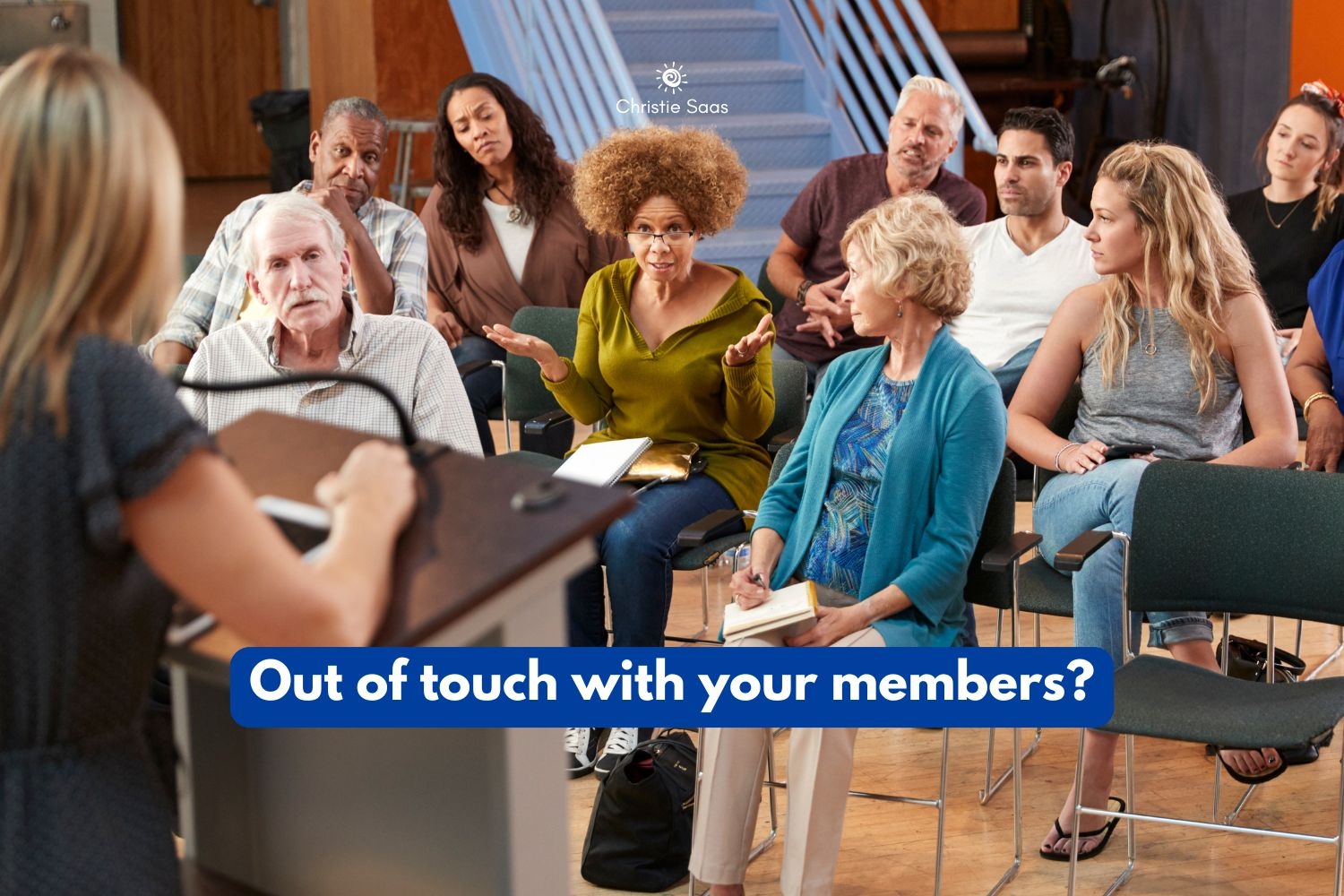Are you out of touch with your members?

A non-profit usually adheres to the practice that the board works for the stakeholders. The membership and clients are often the central focus of that stakeholder group, and from it, the board of directors is elected and the strategic vision developed. That’s just the start. A non-profit will often include other groups in the stakeholder category to feel even more connected to the overall sector it serves. This might include major funders, partners, and even the general public. That’s a lot of groups and individuals for a non-profit to stay connected to and might be overwhelming for a volunteer board of directors to handle on their own. How can an executive director make it easier?
Provide ongoing information.
An executive director will want to respect the board’s role to monitor what is happening in its stakeholder groups so a responsive strategic plan can be developed. But let’s be honest here, board members are busy people. They volunteer to be on the board but also have their own full-time jobs and other personal commitments. They simply might not have the time to do all the work needed to bring meaningful data to the table for strategic planning.
That’s where an executive director can step in and provide an ongoing stream of relevant information, bit by bit at each board meeting, so the board feels constantly informed and always ready for strategic planning.
Use the ED’s normal monitoring report.
The executive director will very likely already be providing some type of report to the board to explain how the programs and services are meeting the outcomes that the board laid out in the strategic plan. That report is the perfect place for an executive director to provide a bit more information, mirroring the format of a strategic planning session.
The key steps for strategic planning is to work through an environmental scan, organizational strengths and weaknesses, and sector opportunities and threats. The executive director can turn each of these areas into headings under which to provide a few notes at each board meeting. As the operating year progresses, the executive director will add more and more details under each heading. Then when it is time for the board to hold its annual strategic planning meeting, they will have a highly tuned-in collection of data about the members, clients, and sector. All of it without the need for expensive public meetings, surveys, or overlapping with the work of the staff team.
Don’t leave strategic planning to chance.
An executive director could leave strategic planning entirely to the board’s discretion, hoping they do the work to stay informed. That’s a big risk for the staff team who might end up with a strategic plan wildly out of touch with the clients and members.
Instead, a non-profit executive director can plant the seeds of meaningful data for the board to receive at each board meeting. The data will grow over the operating year and when strategic plan is written, it is beautifully connected to the stakeholders.
Your turn.
Your turn. How do you provide stakeholder data to the board to use in the development of the strategic plan? Do you truly feel the strategic plan is a responsive and current document? I want to know! Please use the form on the side of the page to let me know, ..or send me an email, ..or message me on socials.
-Christie
…
Hi, I'm Christie. I help executive directors develop the systems and processes needed to run a non-profit.
I learned early in my career, there is no non-profit school. Browsing the internet for resources from big-city experts doesn’t provide practical solutions to balance the budget, write a work plan, or conduct an employee evaluation. Leadership development tips don’t really resonate when you are also taking out the recycling and cleaning the washroom.
I created ChristieSaas.com so non-profit leaders never need to wonder how to do the job – no matter how big or small that job is.
I have been the executive director of small-team, small-budget, non-profits for 20+ years. My experience isn’t theory. It is the real, operational, and practical solutions I use every day.
I love my work, and I want to help you love yours too.
© Christie Saas 2024 All Rights Reserved
…
Want to learn more?
Start with one of my free resources.


